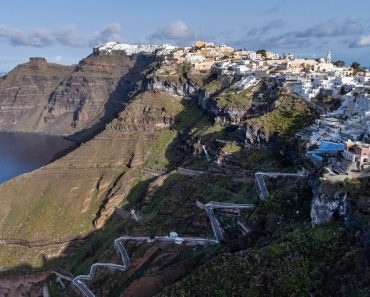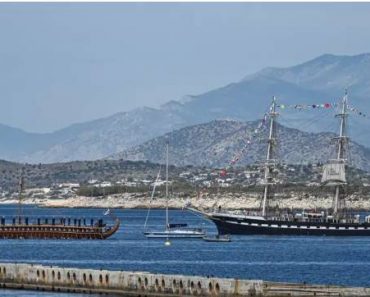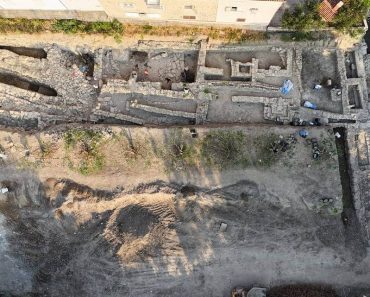Friday, February 14, 2025

In a move to prioritize sustainability and the preservation of historical landmarks, Greece is taking significant steps to enhance the visitor experience at the Archaeological Site of Ancient Olympia. A new walking and cycling route, which will be free of vehicular traffic, is under construction. The route will connect the iconic archaeological site to the International Olympic Academy facilities, offering a peaceful and eco-friendly experience for tourists. The initiative has been approved by Greece’s Central Archaeological Council, ensuring its careful consideration and support. Officially, vehicle traffic will be banned from the area starting February 12, 2025.
A Transformative Project: Creating a Car-Free Zone
The aim of this new initiative is to offer tourists a cleaner, quieter, and more immersive experience as they explore the area surrounding the Ancient Olympia site. The pedestrian and cycling path is being designed with an emphasis on protecting the site’s historical significance while enhancing the visitor experience. The path will stretch from the entrance of the Archaeological Site to the International Olympic Academy, allowing visitors to explore the ancient grounds without the disruption of vehicles.
The project is taking place in a protected archaeological zone, ensuring that the site’s integrity is maintained. Key landmarks, including the ancient stadium, Kronios Hill, and the Pierre de Coubertin monument, are located along this route. By removing vehicles, the area will be more serene, providing cleaner views for tourists and allowing nature to reclaim its space. This is a deliberate and thoughtful effort to provide visitors with an experience that feels connected to the site’s rich history.
What’s Changing: A More Sustainable Experience for Tourists
As of February 12, 2025, cars will be officially banned from the area, marking a significant shift in the way both locals and tourists interact with the site. While this change will affect local residents, who will now have to use bypass routes or country roads to access their properties, the overall goal is to enhance the experience for those visiting Ancient Olympia. For tourists, the project promises to offer a more tranquil and safe environment for walking and cycling, reducing the noise and air pollution typically caused by vehicles.
This initiative isn’t just about eliminating traffic for aesthetic reasons. It’s about creating a safer environment for pedestrians and cyclists while promoting eco-friendly travel options. Visitors will be able to explore the ancient site in a manner that minimizes their carbon footprint, aligning with broader environmental goals. By encouraging non-motorized transport, the project also helps foster a more sustainable tourism model in a place that has long been central to the world’s cultural and sporting history.
The Impact: Cleaner Views, Happier Tourists, and a Boost to Tourism
The decision to create a car-free zone at Ancient Olympia will undoubtedly have a significant impact on the tourism industry. In addition to offering a more peaceful and visually appealing atmosphere, the project will likely attract more visitors who are seeking a less commercialized and more nature-centric experience. With cars out of the picture, tourists will be able to fully immerse themselves in the beauty of the surroundings, from the historical ruins to the stunning natural landscape.
The benefits will extend beyond the immediate area of Ancient Olympia. The project is expected to enhance the overall tourism experience in Greece, attracting eco-conscious travelers and those looking for a more sustainable vacation. Furthermore, with the increasing global demand for environmentally friendly travel, the initiative may inspire other tourist destinations to adopt similar measures, creating a ripple effect throughout the travel industry.
While some inconvenience is to be expected for locals who rely on vehicles for daily travel, the long-term benefits of this initiative will outweigh any short-term challenges. The project aligns with global efforts to promote sustainable tourism and environmental protection, ensuring that future generations can continue to enjoy and learn from this historic site.
The Broader Implications for the Travel Industry
The implementation of this pedestrian and cycling route at Ancient Olympia serves as a model for other popular tourist destinations that are grappling with the environmental impact of mass tourism. As more travelers seek out sustainable travel options, destinations around the world may need to follow suit and consider limiting vehicle access to certain historical or natural sites. Such changes, while initially challenging, can have profound positive effects on the tourism industry, contributing to a shift toward greener, more responsible tourism.
This initiative in Ancient Olympia is also likely to influence other parts of Greece, where the emphasis on preserving historical sites and promoting eco-tourism is becoming increasingly important. With this project’s success, similar efforts may be adopted in other locations with significant cultural and environmental value, helping to balance tourism growth with environmental preservation.









